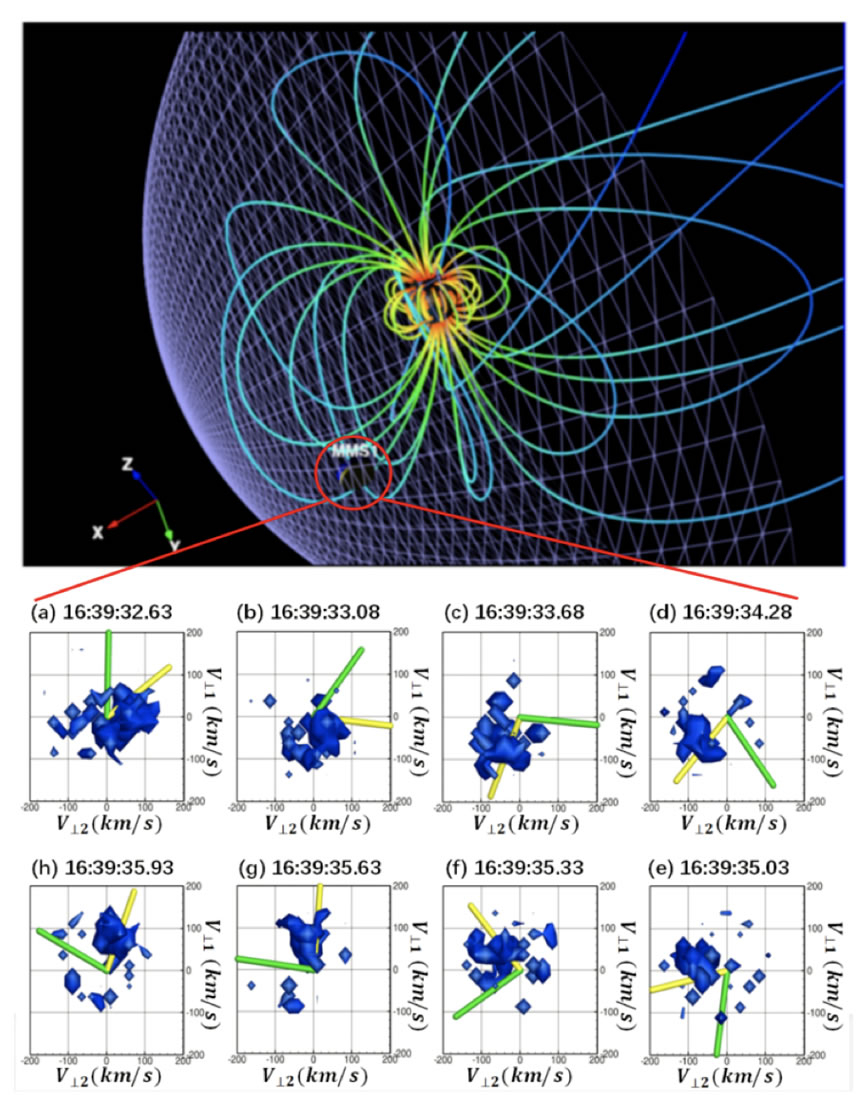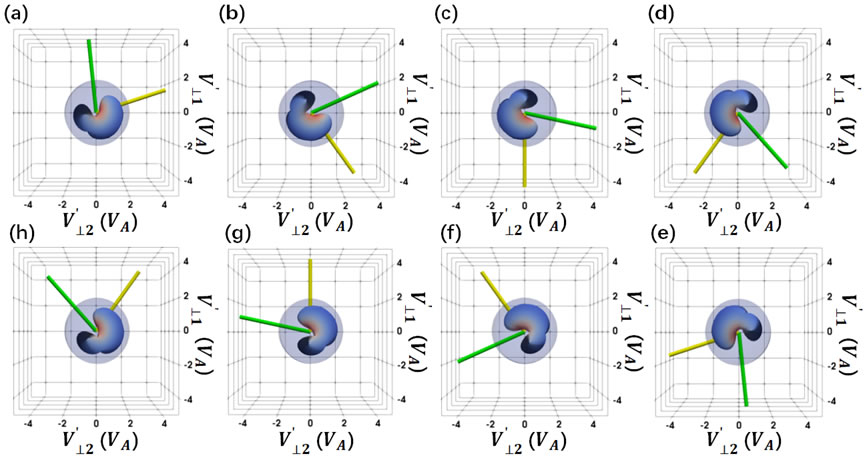Coherence of ion cyclotron resonance for damping ion cyclotron waves in space plasmas
Ion cyclotron waves are a prevalent phenomenon in various plasma environments, e.g., the Earth’s magnetosphere, the magnetosheath, and the solar wind. ICWs near the ion cyclotron frequency can have a close coupling with ions through cyclotron resonance. ICWs are regarded as one of the crucial wave modes in shaping the particle kinetics locally (plasma ions and energetic electrons) and even the dynamics of the global magnetospheric system. ICWs can have different wavebands corresponding to the cyclotron frequencies of different ion species, and, in the magnetospheric context, may be located in different regions in terms of L-shell and magnetic local time (MLT). In the Earth’s magnetosphere, ICW can be generated by temperature-anisotropy instabilities through releasing the excess of the ion perpendicular thermal energy, in which case the wave amplitude saturates when the ion thermal anisotropy approaches an equilibrium state. It is widely believed that ICWs cause precipitation of relativistic electrons and energetic ions from the magnetosphere down to the ionosphere and atmosphere through pitch angle scattering, contributing to the decay phase of geomagnetic storms. ICWs can also be damped by converting energy from waves to particles. For example, ICWs can accelerate ions through cyclotron resonance in the polar region, leading to the loss of from the Earth’s atmosphere, or heat thermal ions preferentially in the direction perpendicular to the background field. Quantification of the wave-particle interactions and the association of energy transfer between waves and particles is necessary to better understand critical space plasma phenomena such as ion kinetic physics, particle precipitation, the atmospheric loss processes, and the evolution of geomagnetic storms.
However, the key evidence for ion cyclotron resonance (i.e., the coherence between electromagnetic fields and the ion phase space density) and the resulting damping of ion cyclotron waves (ICWs) has not yet been directly observed. Investigating the high-quality measurements of space plasmas by the Magnetospheric Multiscale (MMS) satellites, we find that both the wave electromagnetic field vectors and the bulk velocity of the disturbed ion velocity distribution rotate around the background magnetic field. Moreover, we find that the absolute gyro-phase angle difference between the center of the fluctuations in the ion velocity distribution functions and the wave electric field vectors falls in the range of (0, 90) degrees, consistent with the ongoing energy conversion from wave-fields to particles. By invoking plasma kinetic theory, we demonstrate that the field-particle correlation for the damping ion cyclotron waves in our theoretical model matches well with our observations. Furthermore, the wave electric field vectors, the ion current density and the energy transfer rate exhibit quasi-periodic oscillations, and the integrated work done by the electromagnetic field on the ions are positive, indicates that ions are mainly energized by the perpendicular component of the electric field via cyclotron resonance. Therefore, our combined analysis of MMS observations and kinetic theory provides direct, thorough, and comprehensive evidence for ICW damping in space plasmas.

3-D contour surfaces of the fluctuating ion velocity distribution function. The background magnetic field is in the out-of-plane direction. The wave electric field vectors and the magnetic field vectors are marked by the green and yellow sticks, respectively.

3-D contour surfaces of the fluctuating ion phase space density at different phases during one wave period, based on the PKUES solver. The background magnetic field is in the out-of-plane direction. The green and yellow sticks mark the electric and magnetic field vectors, respectively.

